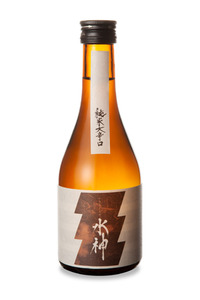
A few years ago, I met two sake makers Komatsu and Sachihime at a promotional event in Melbourne, Australia. And a few days ago, I met them again, this time in their hometown Saga with an exclusive tour experience included!

I hitched a ride to visit both as they are a bit off the beaten track and difficult to reach without wheels. Komatsu is tucked off the highway in a small town, and could be easily overlooked as a large home or local hall. Having only witnessed big breweries before, such as the commercial Sapporo beer museum in Hokkaido, Komatsu was much smaller than I imagined. Nevertheless, for Japan bigger is not always better, and in fact the contrary is more commonly valued; echoing Mr. Komatsu’s vision for his business as community-centered rather than steadily expanding worldwide.

As we entered and took off our shoes to explore the inside, his wife gave us a quick guide to the key machines and tools used in their brewing process. Of these the most surprising was the pricey maintenance costs for kaibo, large rods for mixing rice during fermentation. Most breweries opt for plastic ones instead, but Komatsu insists on sticking to using traditional bamboo-made rods and other dated, but dearly cared for tools. The entire factory oozed this vibe: the faded wooden exterior and interior, carefully cleaned equipment to polish/wash the rice, pockets of plastic to repair broken windows and hinges. While their production process is almost entirely done by hand, the actual sake liquid is pressed by machine and man due to the intense labour required. They only use locally-produced rice and employ a handful of residents per season for their sake production, nodding to their all-round in-house style.

Once we finished our tour around the premises, I was invited to a 1-on-1 interview with Mr. Komatsu, where he discussed his trajectory from finance to inherited owner of the 170 year-old family sake business. On first impression, Mr. Komatsu and the business appear quite conventional, however his ideas and products are anything but! He offered two samples of his current projects: first, amazake, a type of sweetened nonalcoholic sake. Unlike sake, amazake can be produced all year-round, and boasts an array of health benefits: being amino-acid packed and having no artificial sweeteners nor sugar added.

But the real highlight was nomuringo – their home-brewed mirin! Think of sipping vinegar – something typically used for cooking – similarly, mirin is a common condiment in Japanese cuisine, but rarely if ever drunk on its own. Komatsu debunked this stereotype in asserting that mirin was originally meant to be a drink, and I agreed after tasting his 10-year aged nomuringo. Despite emanating an extremely soy-sauce-like salty smell, nomuringo harbours a sharp, syrupy sweetness comparable to Grand Marnier among other fruity liquors. With its deep, golden-brown hue, just on looks alone, it could emerge as a new player in the Japanese whisky arena.

Upon our departure, Mr. Komatsu generously offered us some bottles from his store entrance, showcasing all their sake varieties and awards. It felt like leaving a family home in Japan, with the site’s warm, inviting atmosphere and classical architecture. Perhaps this is the charm of Komatsu, which they hope to share with all sake lovers.




